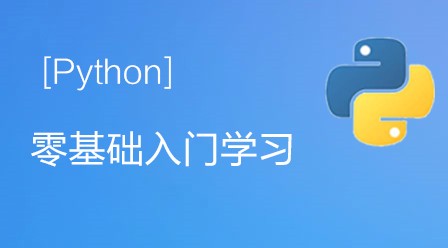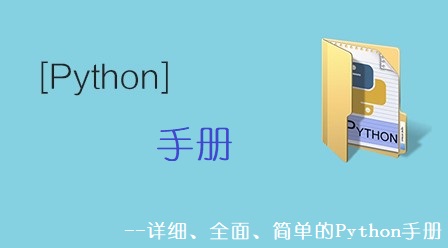
python3中time模块的用法及说明
python中,导入time模块使用的命令是
import time
可以使用以下命令查看time模块内置的能够使用的方法:
dir(time)
可以使用以下命令查看time模块中每个内置方法的说明:
help(time.time_method)
比如time模块下有一个time.time的方法,现在我想查看这个方法的官方文档,就可以使用这样的命令:
help(time.time)
时间的表示形式:
在python中,通常有三种方式来表示时间:时间戳,元组(结构化时间,struct_time),格式化的时间字符串。
(1)时间戳(timestamp):通常来说,时间戳表示从1970年1月1日00:00:00开始按秒计算的偏移量,它的值是float类型
(2)格式化的时间字符串(Format String):‘2017-06-20’
(3)结构化时间(struct_time):struct_time元组共有9个元素:(年,月,日,时,分,秒,一年中的第几周,一年中的第几天等)
time模块中内置的常用的方法:
asctime
接受时间元组并返回一个可读的形式"Tue May 30 17:17:30 2017"(2017年5月30日周二17时17分30秒)的24个字符的字符串
Convert a time tuple to a string, e.g. 'Sat Jun 06 16:26:11 1998'. When the time tuple is not present, current time as returned by localtime() is used. >>> time.asctime() 'Thu Jun 22 19:27:19 2017'
ctime
作用相当于asctime(localtime(secs)),未给参数相当于asctime()
ctime(seconds) -> string Convert a time in seconds since the Epoch to a string in local time. This is equivalent to asctime(localtime(seconds)). When the time tuple is not present, current time as returned by localtime() is used. >>> time.ctime() 'Thu Jun 22 19:34:35 2017'
gmtime
接收时间辍(1970纪元年后经过的浮点秒数)并返回格林威治天文时间下的时间元组t(t.tm_isdst始终为0)
gmtime([seconds]) -> (tm_year, tm_mon, tm_mday, tm_hour, tm_min,
tm_sec, tm_wday, tm_yday, tm_isdst)
Convert seconds since the Epoch to a time tuple expressing UTC (a.k.a.
GMT). When 'seconds' is not passed in, convert the current time instead.
If the platform supports the tm_gmtoff and tm_zone, they are available as
attributes only.
>>> time.gmtime()
time.struct_time(tm_year=2017, tm_mon=6, tm_mday=22, tm_hour=11, tm_min=35, tm_sec=12, tm_wday=3,
tm_yday=173, tm_isdst=0)localtime
接收时间辍(1970纪元年后经过的浮点秒数)并返回当地时间下的时间元组t(t.tm_isdst可取为0或1,取决于当地当时是不是夏令时)
localtime([seconds]) -> (tm_year,tm_mon,tm_mday,tm_hour,tm_min,
tm_sec,tm_wday,tm_yday,tm_isdst)
Convert seconds since the Epoch to a time tuple expressing local time.
When 'seconds' is not passed in, convert the current time instead.
>>> time.localtime()
time.struct_time(tm_year=2017, tm_mon=6, tm_mday=22, tm_hour=19, tm_min=35, tm_sec=35,
tm_wday=3, tm_yday=173, tm_isdst=0)mktime
接受时间元组并返回时间辍(1970纪元年后经过的浮点秒数)
mktime(tuple) -> floating point number Convert a time tuple in local time to seconds since the Epoch. Note that mktime(gmtime(0)) will not generally return zero for most time zones; instead the returned value will either be equal to that of the timezone or altzone attributes on the time module. >>> time.mktime(time.localtime()) 1498131370.0
sleep
推迟调用线程的运行,secs的单位是秒
Delay execution for a given number of seconds. The argument may be a floating point number for subsecond precision.
相关推荐:《Python视频教程》
strftime
把一个代表时间的元组或者struct_time(如由time.localtime()和time.gmtime()返回)转化为格式化的时间字符串.如果t未指定,将传入time.localtime(),如果元组中任命一个元素越界,将会抛出ValueError异常
strftime(format[, tuple]) -> string
Convert a time tuple to a string according to a format specification.
See the library reference manual for formatting codes. When the time tuple
is not present, current time as returned by localtime() is used.
Commonly used format codes:
%Y Year with century as a decimal number.===>完整的年份
%m Month as a decimal number [01,12].===>月份(01-12)
%d Day of the month as a decimal number [01,31].===>一个月中的第几天(01-31)
%H Hour (24-hour clock) as a decimal number [00,23].===>一天中的第几个小时(24小时制,00-23)
%M Minute as a decimal number [00,59].===>分钟数(00-59)
%S Second as a decimal number [00,61].===>秒(01-61)
%z Time zone offset from UTC.===>用+HHMM或者-HHMM表示距离格林威治的时区偏移(H代表十进制的小时数,M代表十进制的分钟数)
%a Locale's abbreviated weekday name.===>本地(local)简化星期名称
%A Locale's full weekday name.===>本地完整星期名称
%b Locale's abbreviated month name.===>本地简化月份名称
%B Locale's full month name.===>本地完整月份名称
%c Locale's appropriate date and time representation.===>本地相应的日期和时间表示
%I Hour (12-hour clock) as a decimal number [01,12].===>一天中的第几个小时(12小时制,01-12)
%p Locale's equivalent of either AM or PM.===>本地am或者pm的相应符>>> time.strftime("%Y-%m-%d")
'2017-06-22'
>>> time.strftime("%Y-%m-%d %H-%H-%S")
'2017-06-22 19-19-28'strptim
把一个格式化时间字符串转化为struct_time,实际上它和strftie()是逆操作
strptime(string, format) -> struct_time
Parse a string to a time tuple according to a format specification.
See the library reference manual for formatting codes (same as
strftime()).
>>> time.strptime("2017-06-21","%Y-%m-%d")
time.struct_time(tm_year=2017, tm_mon=6, tm_mday=21, tm_hour=0, tm_min=0, tm_sec=0, tm_wday=2, tm_yday=172, tm_isdst=-1)
>>> time.strptime("2017-06-21 12-34-45","%Y-%m-%d %H-%M-%S")
time.struct_time(tm_year=2017, tm_mon=6, tm_mday=21, tm_hour=12, tm_min=34, tm_sec=45, tm_wday=2, tm_yday=172, tm_isdst=-1)
struct_time把一个时间转换成结构化时间
The time value as returned by gmtime(), localtime(), and strptime(), and accepted by asctime(), mktime() and strftime(). May be considered as a sequence of 9 integers. >>> time.struct_time(time.localtime()) time.struct_time(tm_year=2017, tm_mon=6, tm_mday=22, tm_hour=19, tm_min=42, tm_sec=7, tm_wday=3, tm_yday=173, tm_isdst=0) time
返回当前时间的时间戳(1970元年后的浮点秒数
Return the current time in seconds since the Epoch. Fractions of a second may be present if the system clock provides them. >>> time.time() 1498131760.7711384 >>> time.time() 1498131764.7621822
几种时间形式的转换
1.把时间戳转换成结构化时间,使用的是time.localtime或time.gmtime命令。
>>> t1=time.time() >>> print(t1) 1498132526.8227696 >>> t2=time.localtime(t1) >>> print(t2) time.struct_time(tm_year=2017, tm_mon=6, tm_mday=22, tm_hour=19, tm_min=55, tm_sec=26, tm_wday=3, tm_yday=173, tm_isdst=0)
2.把结构化时间转换成时间戳,使用time.mktime命令
>>> t3=time.struct_time(time.localtime()) >>> print(t3) time.struct_time(tm_year=2017, tm_mon=6, tm_mday=22, tm_hour=19, tm_min=58, tm_sec=29, tm_wday=3, tm_yday=173, tm_isdst=0) >>> t4=time.mktime(t3) >>> print(t4) 1498132709.0
3.把结构化时间转换成时间字符串,使用time.strftime命令
>>> t1=time.localtime()
>>> print(t1)
time.struct_time(tm_year=2017, tm_mon=6, tm_mday=22, tm_hour=20, tm_min=0, tm_sec=37, tm_wday=3,
tm_yday=173, tm_isdst=0)
>>> t2=time.strftime("%Y-%m-%d",t1)
>>> print(t2)
2017-06-224.把字符串时间转换成结构化时间,使用的是time.strptime命令
>>> t1="2017-05-20 08:08:10" >>> print(t1) 2017-05-20 08:08:10 >>> t2=time.strptime(t1,"%Y-%m-%d %H:%M:%S") >>> print(t2) time.struct_time(tm_year=2017, tm_mon=5, tm_mday=20, tm_hour=8, tm_min=8, tm_sec=10, tm_wday=5, tm_yday=140, tm_isdst=-1)
例子:
假如我有一个时间字符串,然后想得到这个时间之后3天的时间字符串,可以使用如下的命令:
import time
time1 = "2017-05-20"
#把时间字符串转换为时间戳,然后加上3天时间的秒数
time2 = time.mktime(time.strptime(time1,"%Y-%m-%d"))+3 * 24 * 3600
#把转换后的时间戳再转换成时间字符串
time3 = time.strftime("%Y-%m-%d", time.localtime(time2))
print(time3)








